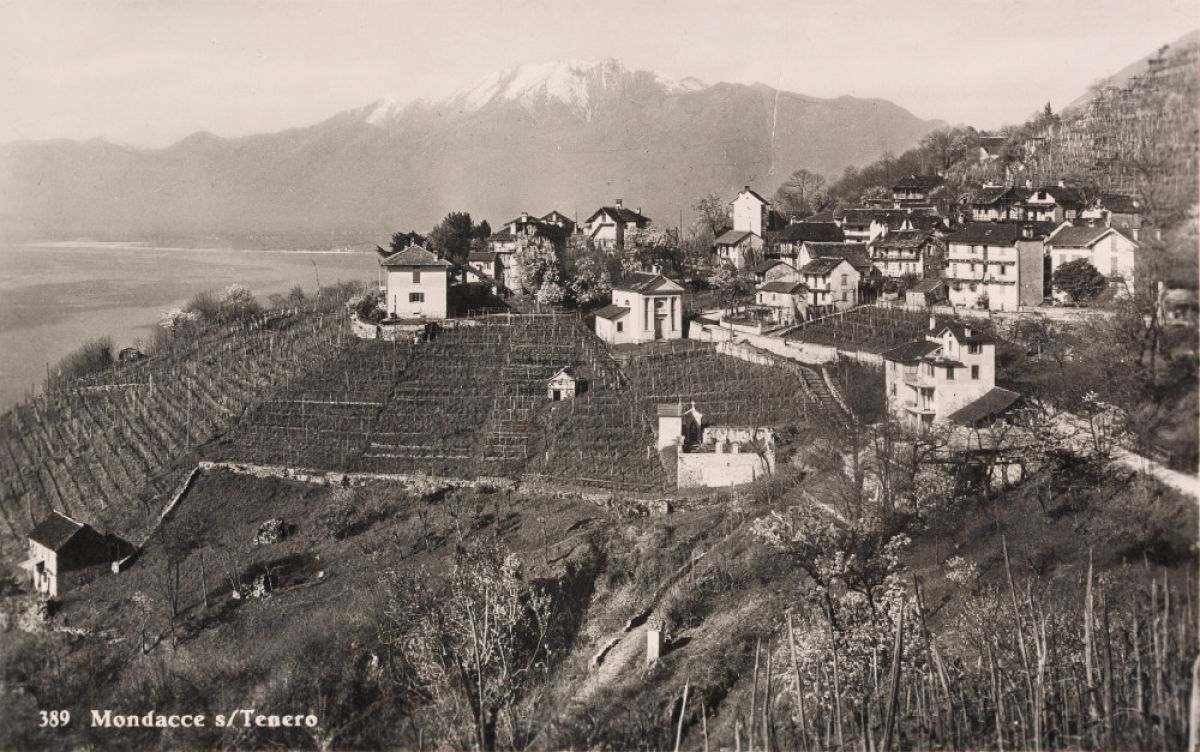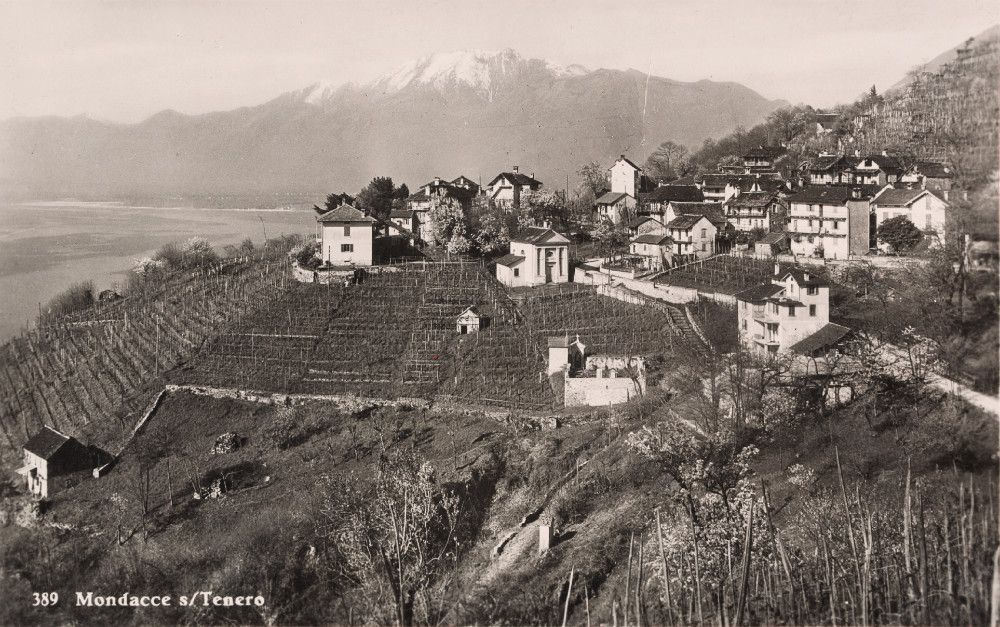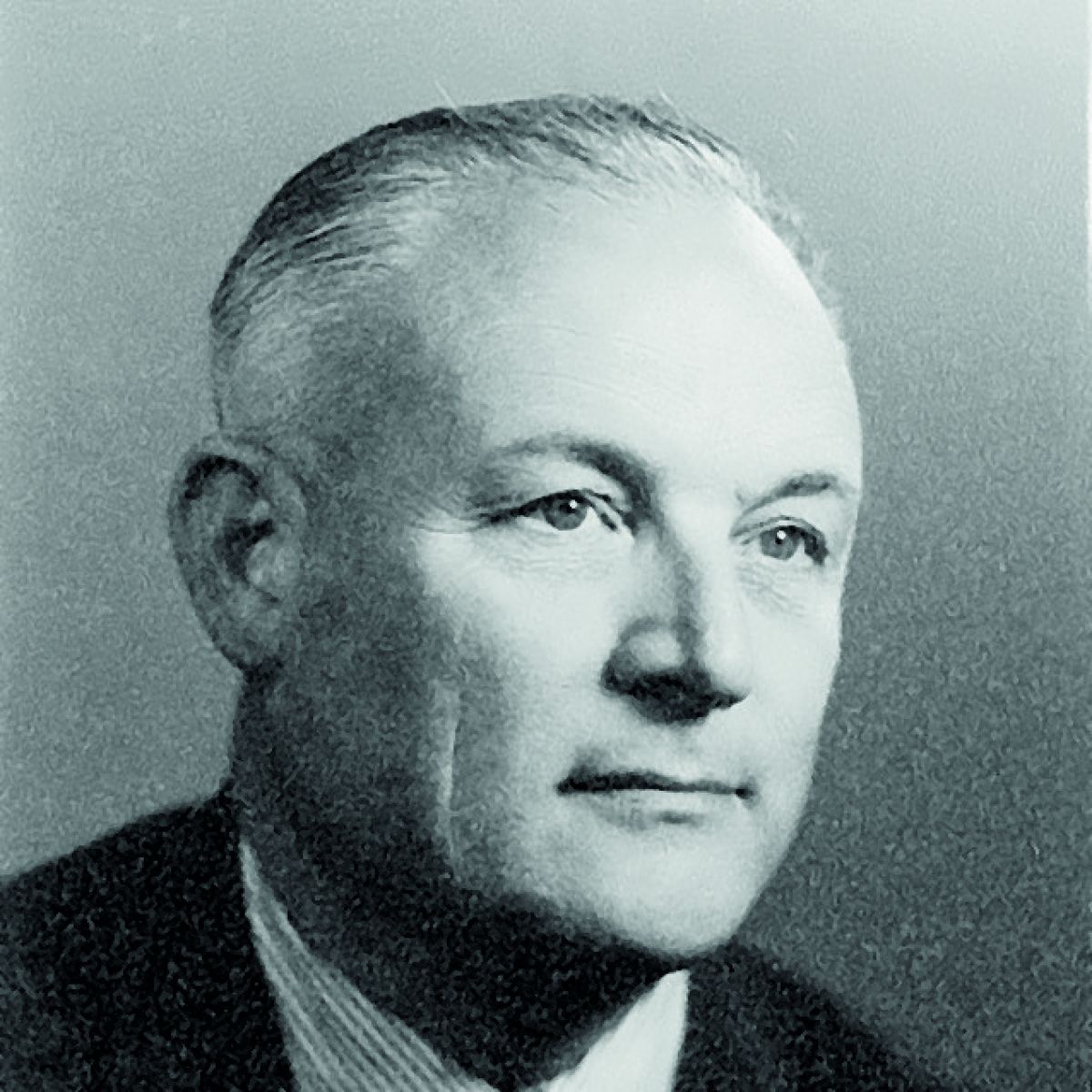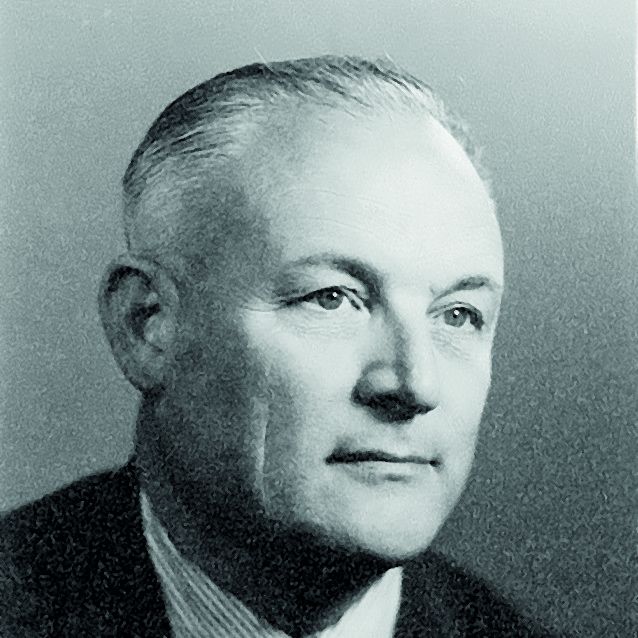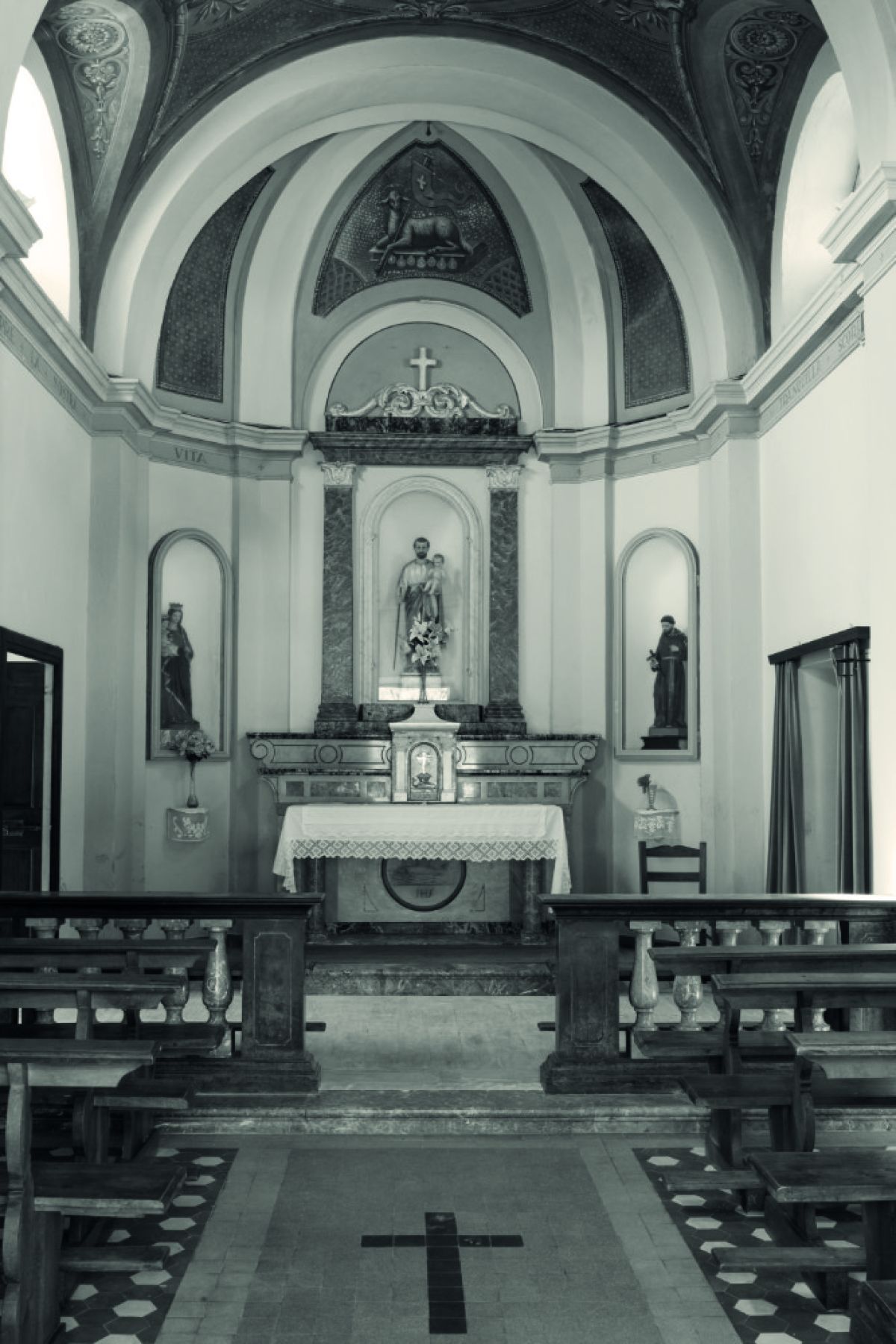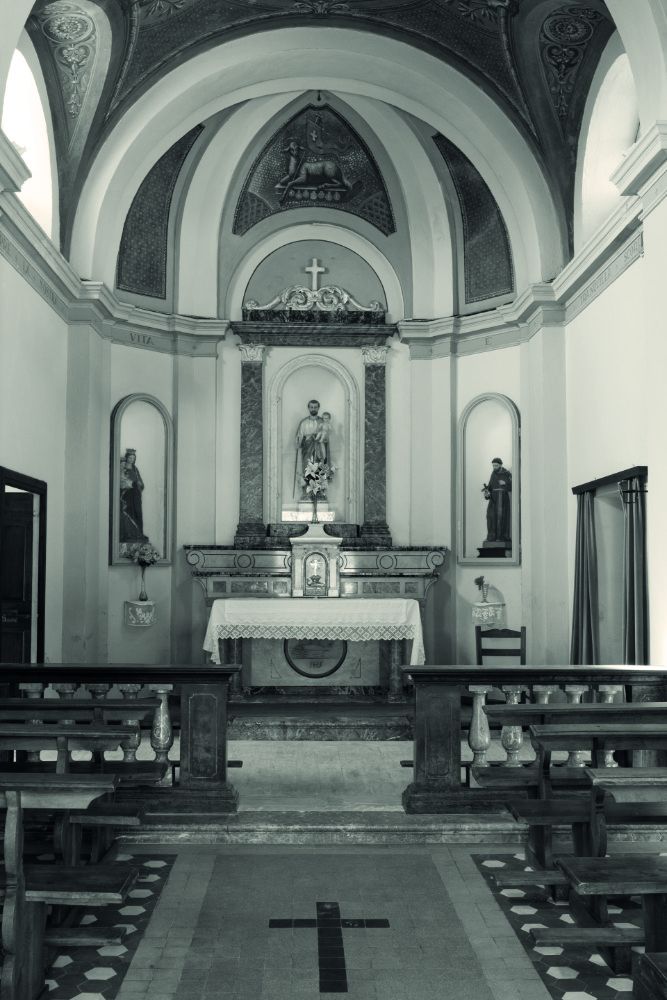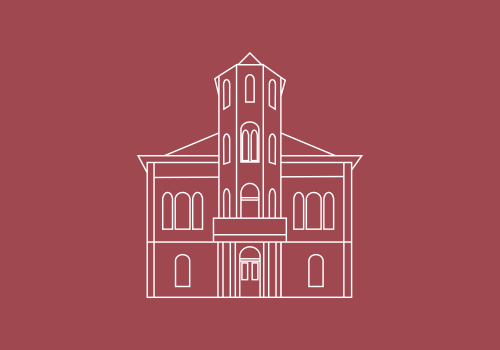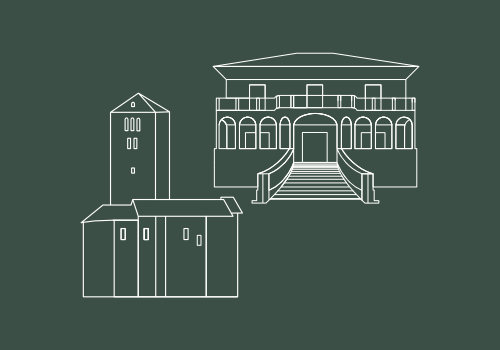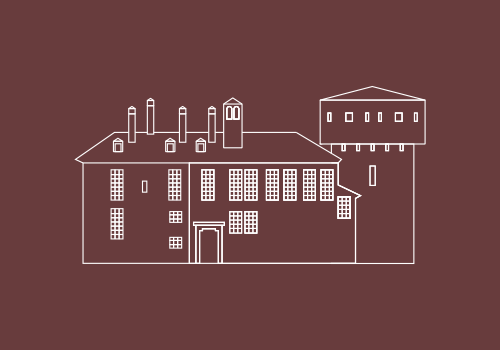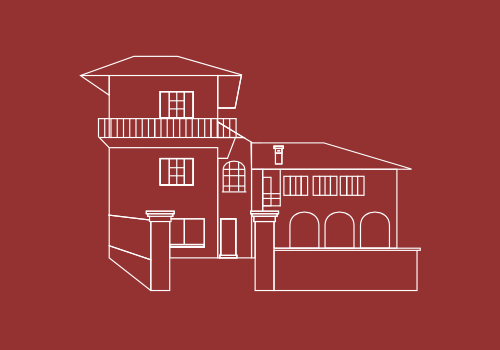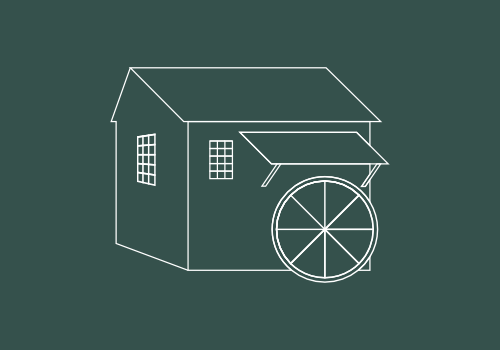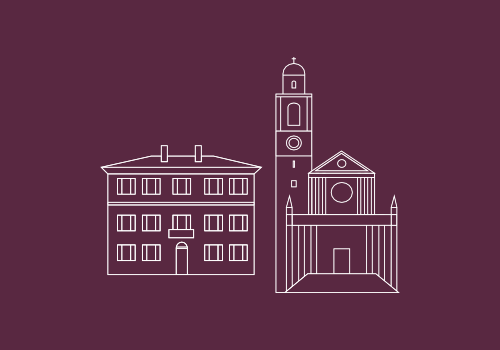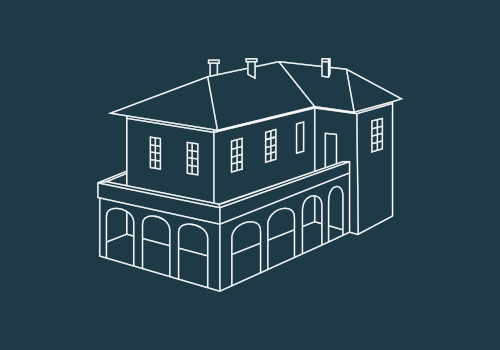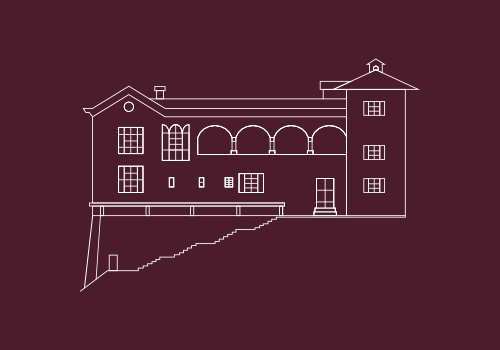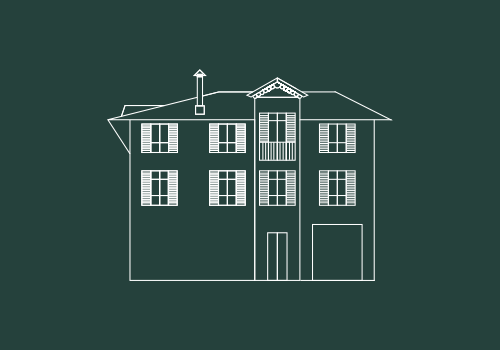Mondacce

In the centre of Mondacce there are still various rustic buildings which provide a reminder of farming life. Some look like those found in the valleys of Sopraceneri… and that’s no coincidence either! It was a colony founded by farmers and peasants from the Maggia Valley during the 16th and 17th centuries to establish vineyards on the sun-kissed slopes and to take their livestock to graze in the nearby ‘Piano di Magadino’ during winter months.
Mondacce postcard
The hamlet had a small school and a cemetery. After the Second World War in 1948, the population asked in vain to become part of the municipality of Tenero, thereby leaving Minusio. This meant the children had to continuing going – obviously on foot – to the far-off school in Cadogno, the only benefit of which was that they could not be held in detention after lessons as they had to undertake the journey home together – both younger and older pupils.
Aldo Crivelli
The headquarters of the ‘Museo Mecrì’ foundation, founded in 2014, are found in a secular property in the historic centre of Mondacce. This organisation aims to put works by the artist and archaeologist Aldo Crivelli on public display, linking them to key historical events, and to hold regular contemporary art exhibitions.
Dry-stone walls
The dry-stone walls create environments that are vitally important from a naturalistic perspective. The crevices between the stones provide a habitat for many species of flora and fauna (insects, spiders, scorpions, snails, reptiles and amphibians). In the tight spaces between the stones, there are warm, cool, humid, dry, sunny and shaded spots. These walls are also typical features of canton Ticino’s traditional countryside and historical evidence of subsistence farming.

